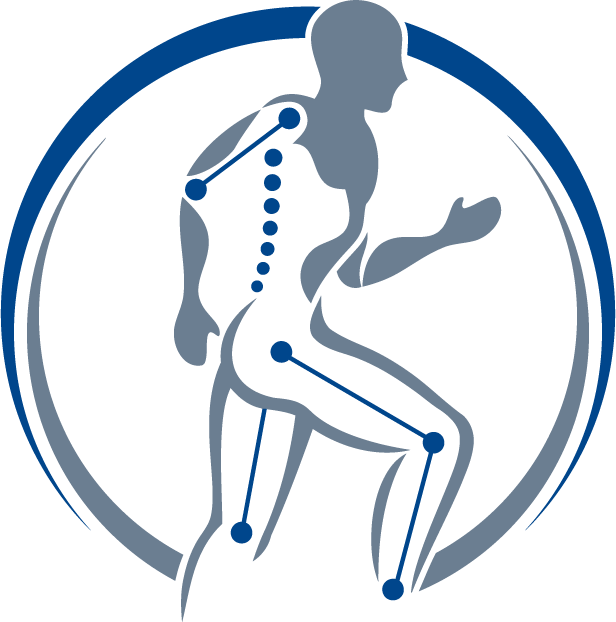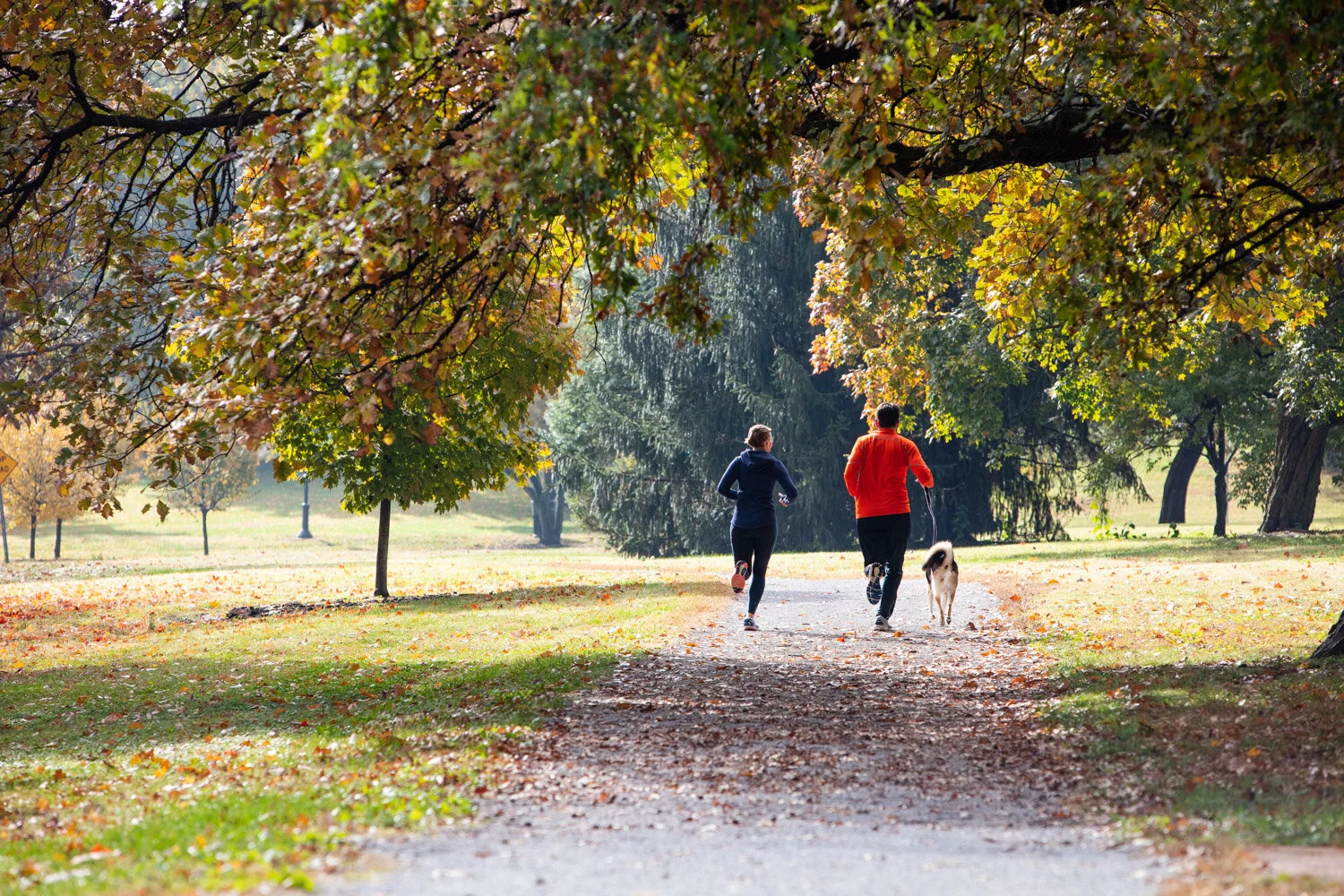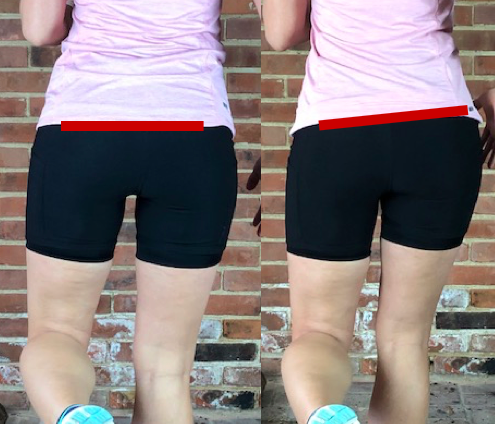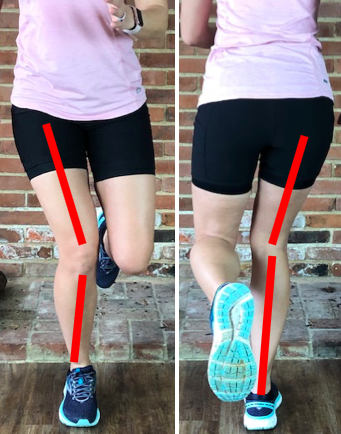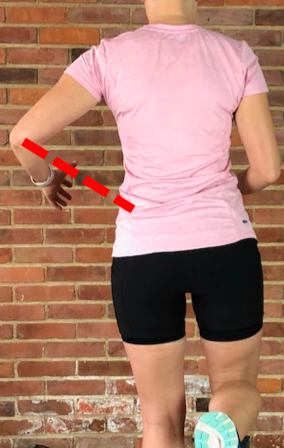Running Biomechanics: Gluteal Compensation Patterns
This blog was created mid 2019 for the Track Times News:
As we all know, this past winter was bitterly cold here for us Saint Louis runners. Despite the cold, I was able to join a number of runners in doing the Frost Bite Series. This was the first time that I’ve ever participated in the Frost Bite and, let me tell you, despite the bitter temperatures, it is really a joyous race experience! Oddly enough, there’s comfort in being surrounded by other runners who are excited to race through rain, shine, snow, ice or hail with you.
Whenever I get to run in a race, the physical therapist in me can’t help but evaluate the running technique of those around me. Even at the Frost Bite Series where everyone was bundled under layers of cold weather running gear, I was still able to see a number of runners running with something that today we will call gluteal deficiency. This is PT talk for when the muscles in and around your butt (aka the gluteus) are either weak or under-used in some way, thus making them deficient! This is a problem that can really catch up to you and wreak havoc on your ability to run pain-free – I know it certainly did for me in my early running days!
As many of you may guess, the gluteal muscles are incredibly important for strong running. For our purposes today, I will be referring to the gluteals as one muscle group. That muscle group includes the gluteus medius, gluteus maximus and gluteus minimus. When running, these muscles work together to move the leg behind you, to keep the pelvis level to the horizon when standing on one leg, and to keep the leg from turning too far inward. This is pretty important stuff for a runner! Suffice it to say that the stronger and more balanced the glueteals, the more stable and efficient your running form will be.
In talking about gluteal deficiency we will include “weak”, “long” and “under-used” gluteal muscle function. We can view gluteal weakness in two different ways. The first way is common for many of us in today’s modern working world: too much time spent sitting at a desk and not enough time engaging in climbing activities (e.g. trees, rocks) or in side-to-side movements (e.g. quick changes of direction while running, sideways running, side stepping, pushing or pulling large objects sideways). In this case, our work and lifestyle can cause our gluteal muscles to become weak from lack of use, which can translate to impaired running form when we do go out to hit the trail or the pavement. For many of us, simply adding these types of movements into an exercise routine will not be enough to remedy gluteal deficiency when running. This is because as we age our bodies find more efficient strategies to avoid using the weak muscles and create patterns without them. We have to re-train the gluteal muscles and nerves in isolated movements before introducing them to fully body strengthening.
To understand the second way that weak gluteals cause gluteal deficiency, we first need to review a little bit of muscle mechanics. Think about your biceps, when your arm is straight the muscle is long, when the elbow is bent as much as possible the muscle is short. You want the bicep to be strong somewhere in the middle of the range so you can carry things. If it was strong at a longer range, you would carry heavy objects in it’s strongest range, which might not get your 7 grocery bags up on the counter. In going back to the topic of weak gluteals and their relationship to gluteal deficiency, we can think of a runner who has strong gluteals in a long position but weak gluteals when the muscle is in the shortest position. In this case the runner may need to strengthen the muscles in a shorter range in order to improve the muscle performance for the desired result in their running gait.
When someone has under-used gluteals, they may have very strong gluteals from lots of strengthening exercises. However, when they run they may not use the muscle group. This runner will test strong but their running pattern will tell a different story. In addressing the running mechanics issues in this case, the runner may need to work on specific exercises that train him or her how to find the gluteal at different phases in the running gait cycle. This will help them to use the muscle in a more productive way while running.
There are six patterns that tip a physical therapists off to the possibility of gluteal deficiency. You can use the description of each pattern and its accompanying photo to help identify a possible gluteal deficiency in yourself or in a training partner’s.
Hip drop
Crossover step
Knee valgus (turning inward) or varus (bowing out)
Wide arm swing
Trunk lean/side bending
Knee excessively forward of foot at mid stance
1) Hip Drop
The hip drop is one of the most well-known and easily identifiable patterns that points to weak or under-used gluteals during running. In this pattern you can see that when the leg and foot are moving forward, the same-side hip drops below the opposite hip on the stance leg (i.e. the leg and foot that are making contact or standing on the ground). This pattern causes the low back to side bend and often creates various compensations at the knee that may impact foot position as well. Runners with this pattern may experience pain in the low back, hip, knee, foot, or ankle. This pattern is particularly noticeable when you run behind someone using a waist band across their pelvis. The clear line of the waist band makes it easy to see how dramatic hip drop can be, especially when cadence is low as well. If the impairment is subtle, a slow-motion video may help you identify it more easily than just using the naked eye. Five degrees of hip drop is considered normal. However, if you can see someone’s hip dropping while running behind them, then it is likely more than five degrees.
2) Crossover step
To identify a runner using a crossover step, it’s again helpful to look at the runner from behind. In order to determine whether someone is taking a crossover step over the body’s midline, you can draw a line from the middle of the person’s head down through the gluteal crease (aka the butt crack) and then down to the ground. If the runner’s foot crosses over the midline to the other side of the body then this is a sign of gluteal deficiency. This is essentially the same pattern as the hip drop except that it manifests when the femur crosses midline instead of in the pelvis dropping down. Sometimes a runner may have hip drop on one side of the body and do a crossover step on the other. This type of pattern can create a lot of stress on the foot as it is forced to contact the ground at a more extreme angle.
3) Knee valgus or varus
In knee valgus and knee varus, the knee shows the signs of gluteal deficiency by collapsing inward or bowing outward. When the knee engages in either this inward or outward motion, the IT band/ TFL, hamstrings and hip adductors are forced to compensate to create stability. Knee valgus patterns can be painful at the knee for many reasons (patella, ITB, meniscus, hamstring insertion) and can also drive ankle pronation pain. Knee varus patterns can create ITBand pain, and is associated with knee arthritis later in life.
4) Wide arm swing
In an effort to move more of the body mass over the standing leg and hip, many of us with gluteal deficiency will widen our arm swing in order to draw the elbow further from the body. This moves the center of mass closer to the hip joint and decreases the length of the moment arm thereby decreasing the work of the gluteal. This pattern does not necessarily cause pain problems directly but it can contribute to pain in the spine. Since the momentum of the arms is more rotational in nature than forward and backward, it increases the rotation in the lumbar and thoracic sections of the spine.
5) Trunk lean/side bending
Similar to the wide arm swing, the runner with a trunk lean to the side is bringing more of his or her body mass over the stance leg hip to decrease the work of the gluteal. This pattern is often seen in runners with mid to upper back pain when running (but it is not the only cause of upper back pain!).
6) Knee excessively forward of the foot at mid stance
To identify this pattern, I generally have to watch a recording of a runner running on a treadmill in slow motion video analysis. I look to see if and when the knee moves past the foot after the foot makes contact with the ground. If the knee stays frozen in space while the foot travels backward (without the knee), then usually the calf is working too hard and taking the brunt of the impact while the gluteals (and possibly the hamstrings) are not doing enough to extend the hip joint. The runner who exhibits this pattern commonly overloads their calf and Achilles and usually benefits from learning how to properly use their hip extensors during this weight acceptance phase of gait. Oftentimes the runner who uses this pattern is trying to conserve energy for long distance running and, consequently, underuses their gluteals and other hip extensors in this effort. If this runner has pain, it will likely appear in the knee or Achilles.
It’s important to note that some people run using one of the patterns listed above but do not experience any pain. If you fall into that category, don’t worry. All that means is that you can add some glute strengthening to hopefully prevent any pain from cropping up in the future.
If you are running with pain you should check in with your local running physical therapist for guidance on how to fix the problem! If you notice something about your training partner’s gait, be sure to give them feedback in a constructive and friendly manner.
One final note to add to this discussion on gluteal deficiency is that there are other joint limitations and areas of weakness that can create running patterns similar to those described above. These patterns are not solely specific to gluteal muscle problems. That being said, in general, gluteal deficiency is the most common cause.
Here’s to healthy running and warmer weather!
- Ann Crowe, PT, DPT, MS
This blog is not intended as medical or professional advice. The information provided is for educational purposes only and is not intended to serve as medical or physical therapy advice to any individual. Any exercise has potential to cause injury or pain if it is incorrectly done or is not the right exercise for an individual’s medical or physical problems. You should consult with a physical therapist or medical provider for individualized advice.
